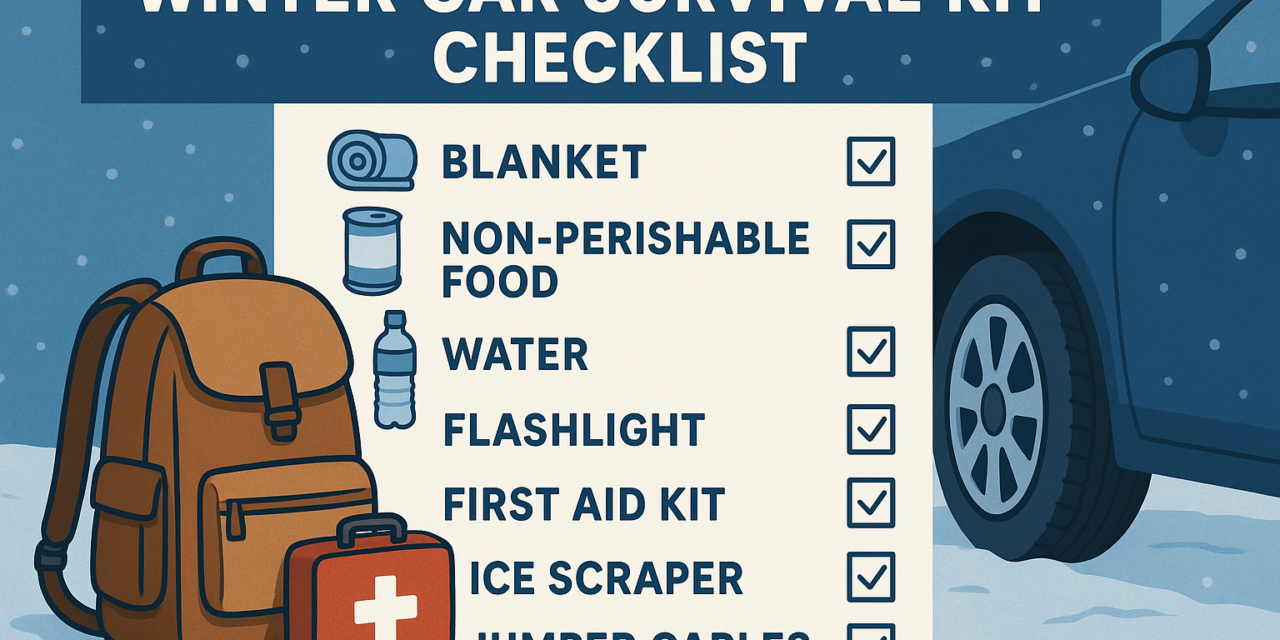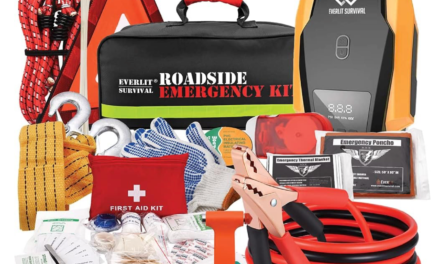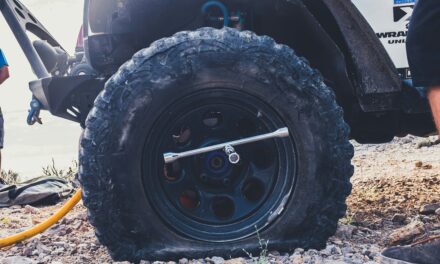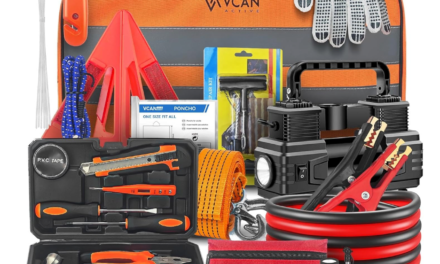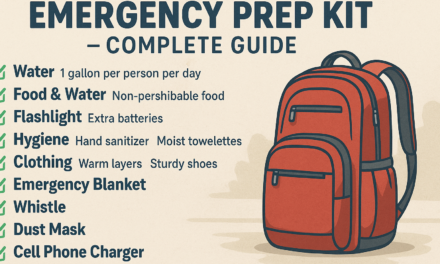Winter Car Survival Kit Checklist is one of the most important cold-weather preparedness steps you can take. Getting stranded during a winter storm can be dangerous, and Ready.gov warns that “winter storms create a higher risk of car accidents, hypothermia, frostbite, and heart attacks from overexertion” (Ready.gov). Having a winter car survival kit ensures you have the supplies to stay safe, warm, and fed until help arrives.
This checklist is based on recommendations from Ready.gov, the National Weather Service (NWS), and other automotive safety experts.
Safety and Visibility
If your vehicle breaks down in winter conditions, being seen is the first priority. The National Weather Service advises keeping a flashlight with extra batteries, reflective triangles, or road flares to alert other drivers (NWS PDF Checklist). A fully charged cell phone car charger or portable power bank is also essential.
Recommended items:
- Flashlight with extra batteries
- Reflective triangles or LED road flares
- Car charger and portable power bank
Warmth and Shelter
Staying warm is critical to preventing hypothermia. Ready.gov lists blankets, sleeping bags, and extra clothing layers as key kit components (Ready.gov Winter Car Kit). Hats, gloves, and waterproof boots add extra protection against the cold.
Recommended items:
- Thick blankets or winter sleeping bag
- Warm hats, gloves, scarves, and socks
- Waterproof boots and outer layers
- Emergency mylar space blankets
Vehicle Recovery Tools
Snow and ice can make it hard to move your vehicle. Many experts recommend keeping a small snow shovel, traction aids like kitty litter or sand, and jumper cables or a portable jump starter (The Zebra Winter Kit Guide).
Recommended items:
- Compact snow shovel
- Kitty litter, sand, or traction boards
- Jumper cables or portable jump starter
- Tow strap and tire air compressor
First Aid and Nutrition
A roadside emergency can lead to injuries or prolonged waits for assistance. A stocked first aid kit and calorie-dense snacks help keep you safe and energized. Ready.gov advises carrying bottled water and non-perishable food in your kit (Ready.gov Winter Weather).
Recommended items:
- Basic first aid kit
- Bottled water
- Energy bars, trail mix, or dried fruit
- Personal medications
Communication and Navigation
If your phone dies or GPS fails, a paper map and a printed list of emergency contacts can be lifesavers. The NWS also recommends a battery-powered or hand-crank NOAA weather radio to receive updates (NWS Winter Safety).
Recommended items:
- NOAA weather radio
- Paper map of your area
- Printed emergency contact list
Ready.gov Winter Car Kit Summary
According to Ready.gov, a well-prepared winter car kit should include:
- Jumper cables
- Flares or reflective triangle
- Ice scraper
- Warm blankets
- Non-perishable food and bottled water
- Extra clothes and kitty litter for traction
(Ready.gov Kit Recommendations)
Winter Safety Tips for Drivers
The Wisconsin Department of Transportation advises storing your kit inside the passenger area, not the trunk, so you can access it even if the trunk is frozen shut. Experts also suggest reviewing your kit each fall to replace worn or expired items and to adjust for your climate and travel patterns.
Quick Winter Car Survival Kit Checklist
Safety: flashlight, reflective triangles, flares, charger, power bank
Warmth: blankets, sleeping bag, extra clothes, boots, gloves, mylar blankets
Recovery: shovel, traction aids, jumper cables, tow strap, compressor
First Aid & Food: first aid kit, water, snacks, medications
Communication: weather radio, paper maps, emergency contacts
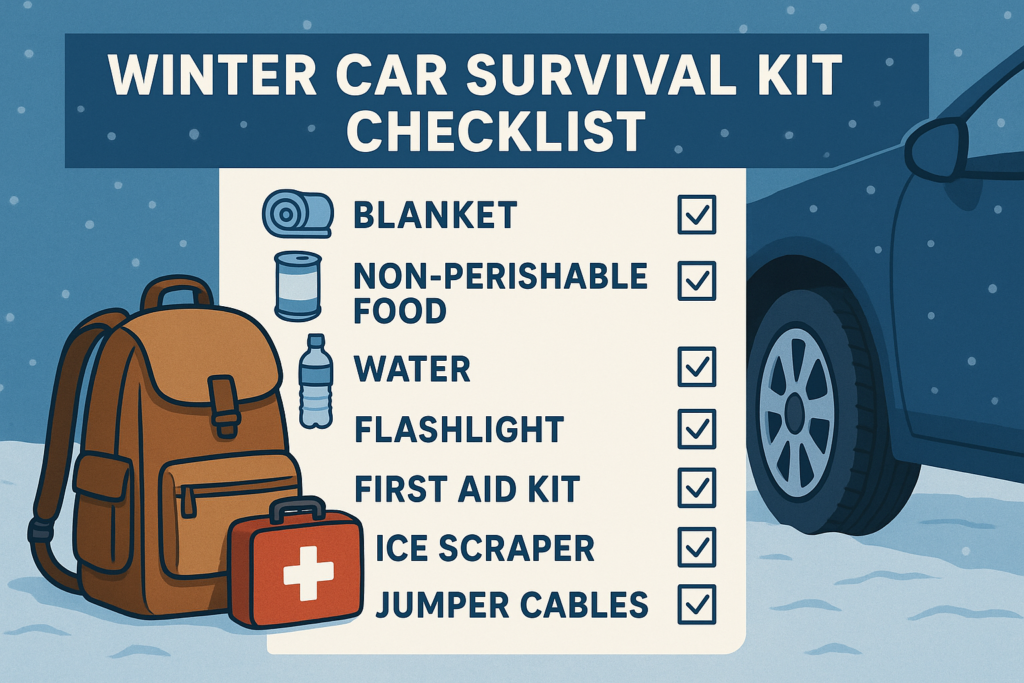
Final Thoughts
A winter car survival kit is not just a precaution—it’s a vital part of safe winter driving. Following recommendations from Ready.gov, the NWS, and other trusted sources ensures your kit is equipped for real emergencies. Assemble it before the cold season begins, store it where you can access it quickly, and review it annually. Your preparedness could make all the difference in a dangerous situation.
Affiliate Disclosure:
This article contains affiliate links. If you purchase through these links, we may earn a small commission at no extra cost to you. This helps support our site and keeps resources like this free.

